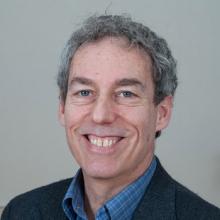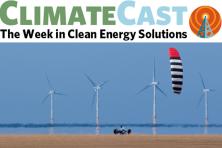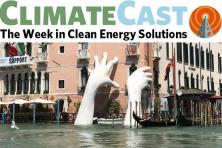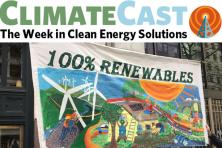Utilities at risk from solar-plus-storage, says credit rater
Barclays’ credit team downgraded electric utility bonds across the board last week, citing the threat of solar-plus-battery systems to utility business models. Residential solar-and-storage systems are now cost-competitive with utility grid power in Hawaii, with California, New York, and Arizona expected to hit parity by 2018, Barclays said. Whether utilities can keep customers from leaving the grid, which would cut utilities’ revenue significantly, will depend largely on regulatory reform, according to Rocky Mountain Institute.
Renewable power on exponential upward path
Renewable generation on the U.S. grid is growing nearly as fast as autos were adopted at the dawn of the Motor Age, doubling every two and a half years. The industry’s success presents a new spin on the fossil-fuel companies’ “stranded assets” problem, since their trillions of dollars in coal, gas, and oil reserves will be devalued if green power outcompetes them. This competitive threat isn’t just a challenge to the U.S. carbon sector: Chinese PV giant Suntech predicts that solar power will be as inexpensive as coal in China within three years.
Shell unmoved by ‘stranded assets’ question
Royal Dutch Shell offered a more nuanced response than Exxon Mobil to investors concerned about the risk of a “carbon bubble,” but still dismissed the likelihood that anything will get in the way of its ability to market its oil and gas. In a letter posted on the firm’s website, it acknowledged that human-caused climate change is real, but said that its planning scenarios foresaw a role for fossil fuels for decades to come. Shell does anticipate that carbon pollution will come with a price—$40 per metric ton of CO2—but said that its assets will be marketable nonetheless.
A wet 2011 pulled carbon from the air—but it might not last
Record rainfall in 2011 turned dry landscapes in the southern hemisphere into the largest land-based carbon sink on earth, surpassing tropical rainforests. Research published in Nature found that vegetation sequestered 40 percent of global greenhouse gas emissions that year, the most since measurements began in 1982. Intense La Niña rainfall greened the normally dormant grasses and scrub vegetation in semiarid parts of Australia, South America, and southern Africa, causing an uptick in carbon storage. But that doesn’t mean the carbon will stay sequestered: these ecosystems usually have a rapid decay cycle, so that extra carbon may succumb to fire or decomposition.
Everything you always wanted to know about CA cap-and-trade*
*but were afraid to ask
Sightline presents a readable and comprehensive overview of California’s cap-and-trade system for carbon emissions, which covers electric utilities and will expand next year to nearly all climate pollution statewide. Sightline lauds the limited acceptance of offsets (at most 8 percent of a company’s obligations) and other details that keep it from being a giveaway to energy interests. Business leaders, too, praise the program for fostering innovation and planning ahead. The California program has particular relevance to the Northwest because its rules allow other states to plug in—and Oregon and Washington’s governors have pledged to limit their states’ carbon pollution.
Stanford’s coal divestment dodged bigger oil and gas holdings
Stanford University’s decision this month to divest from its holdings in the coal business was aimed at deflecting student pressure while protecting the institution’s greater—and highly profitable—investments in oil and gas, according to a Stanford scholar writing in The New Republic. The university’s holdings in fossil fuels total between 1 and 10 percent of its $18 billion endowment, according to a range offered by university President John Hennessy. Hennessy compared the decision to the university’s narrow divestment from suppliers to the South African apartheid regime in the 1980s, but not from all firms trading with that country.
Pope calls for environmental protection as religious duty
Respect for God’s creation should motivate believers to become faithful stewards of the environment, Pope Francis said last week in an address to a crowd in Rome. Invoking the creation story from the Book of Genesis, the pontiff said that humanity had been charged with caring for nature, and that exploiting nature is sinful. An editorial in the National Catholic Reporter called on the Church to become a leader in educating the public about climate issues and advocating for the climate’s protection. In Florida, meanwhile, a group of evangelicals petitioned fellow believer Gov. Rick Scott with 12,000 signatures to create a climate plan.
NextGen PAC to spend $100 million against 7 climate deniers
Climate mega-donor Tom Steyer attracted a flurry of attention last week for his pledge to spend $100 million through his PAC attacking climate-change deniers in seven U.S. Senate races this year. The Hill compared his approach to the Oakland A’s Moneyball technique of picking players, focusing on assets (in this case blocs of voters) that have been underappreciated by his adversaries. The NYT and Guardian looked at whether climate could become a new wedge issue in American politics, while the Washington Post and LA Times compared his efforts with those of his adversaries, the coal-fired Koch brothers.
New solar façades can redeem old office buildings
A 29-story high-rise in South Korea—home to a solar panel manufacturer—will be outfitted with solar panels on its sunniest walls as a way of improving the three-decades-old building’s energy performance. The less sunny sides will have adjustable shades to provide natural light but prevent overheating, and windows will be replaced with energy-saving models. This approach promises more energy savings than the wind turbines that have been erected on two New York high-rises, intended as much for symbolism as for the modest amounts of electricity they are expected to generate.





